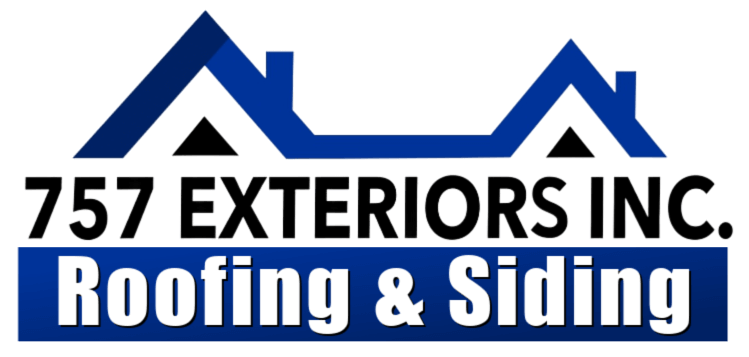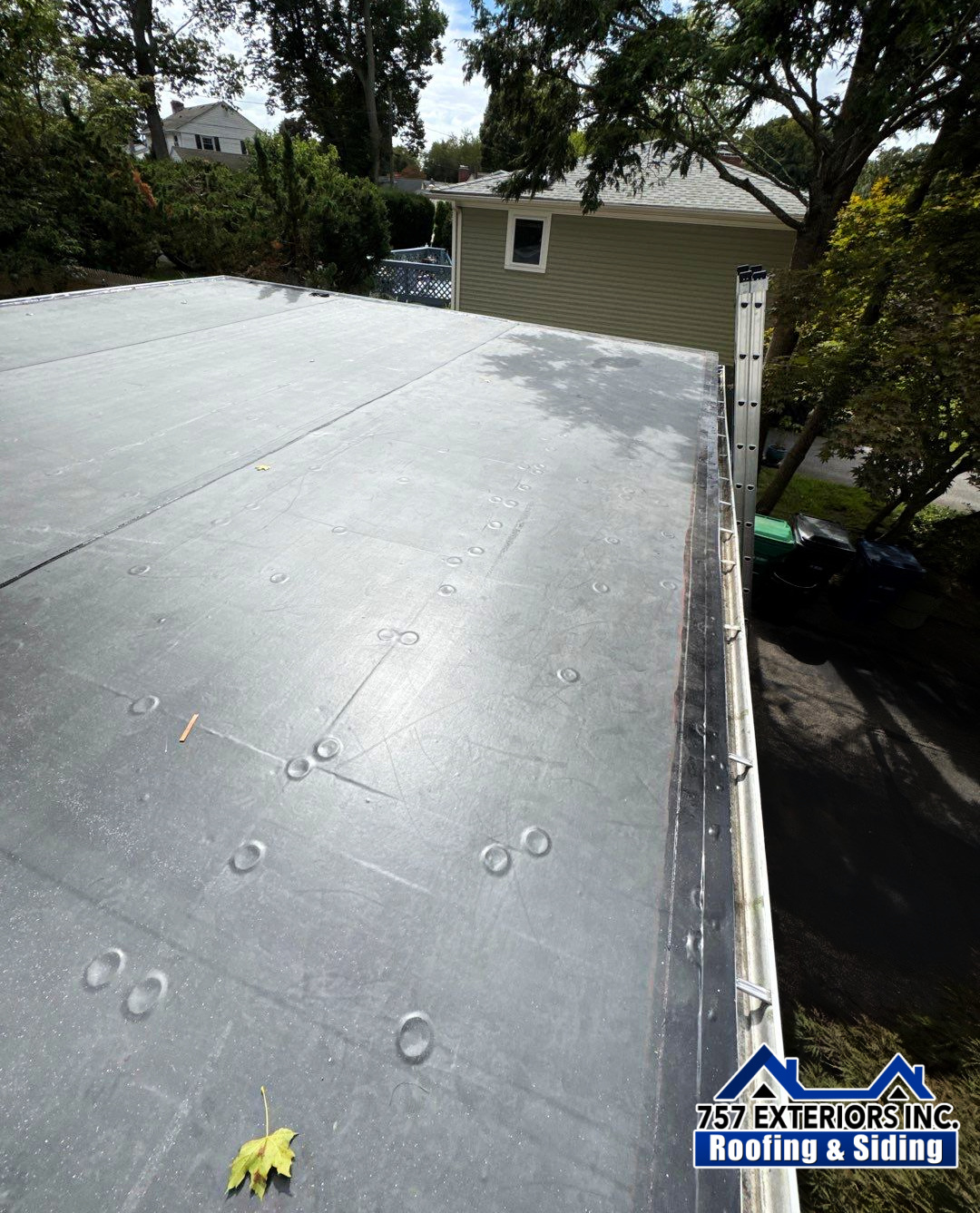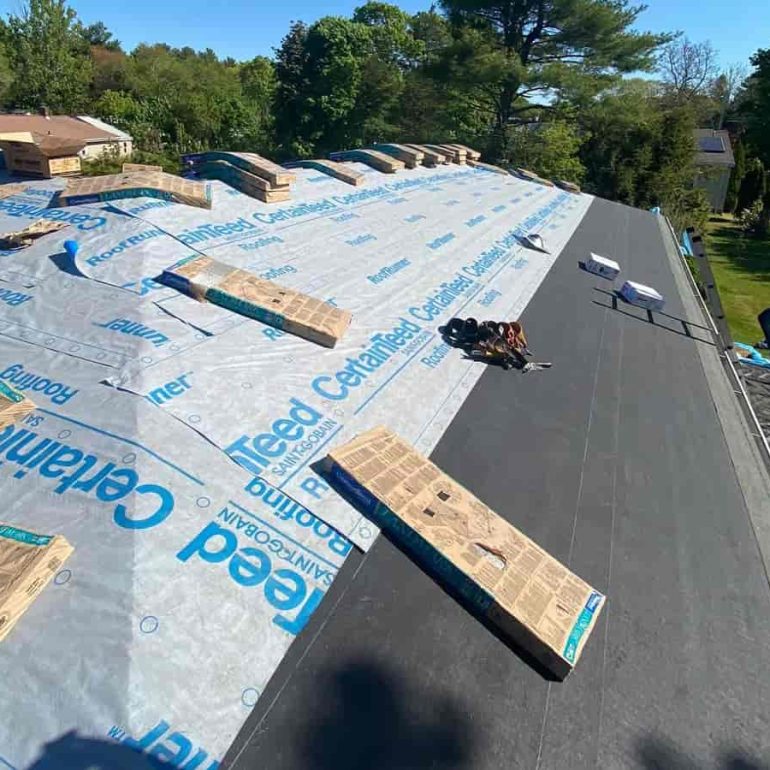Choosing the right roofing for low slope roof applications requires careful consideration of materials that can withstand water pooling, temperature fluctuations, and provide long-lasting protection. Low-slope roofs, typically defined as having a pitch of 2:12 or less, present unique challenges that demand specialized roofing solutions.
When selecting materials for your low-slope roof project, partnering with experienced professionals like 757 Exteriors INC in Cranston, RI ensures proper installation and material selection. Their expertise in roofing, siding, and gutters services helps property owners navigate the complexities of low-slope roofing systems effectively.
The best materials for low-slope roofs must excel in waterproofing, durability, and energy efficiency while being suitable for the specific climate conditions of your region.
TPO Roofing: The Modern Solution
Thermoplastic Polyolefin (TPO) roofing has emerged as one of the most popular choices for low-slope applications. This single-ply membrane offers excellent heat-welded seams that create a watertight barrier, making it ideal for buildings requiring superior water resistance.
TPO roofing provides exceptional energy efficiency with its reflective white surface that helps reduce cooling costs during hot summer months. The material’s flexibility allows it to expand and contract with temperature changes without cracking or splitting, ensuring long-term performance.
Installation of TPO roofing requires specialized equipment and expertise to achieve proper heat welding of seams. The material typically comes in rolls ranging from 6 to 12 feet wide, allowing for fewer seams and reduced potential leak points.
Expert Tip: TPO Installation
Always ensure TPO membranes are properly adhered or mechanically fastened according to manufacturer specifications. Poor installation can lead to membrane lifting and water infiltration.
For comprehensive roofing solutions, consider exploring residential roofing services that specialize in modern materials like TPO.
EPDM Rubber Roofing: Proven Reliability
Ethylene Propylene Diene Monomer (EPDM) rubber roofing has been a trusted choice for low-slope applications for decades. This synthetic rubber membrane offers outstanding durability and weather resistance, making it suitable for various climate conditions.
EPDM roofing excels in temperature extremes, maintaining flexibility in cold weather while resisting heat damage in high temperatures. The material’s dark color naturally absorbs heat, which can be beneficial in colder climates but may require additional insulation in warmer regions.
The installation process for EPDM is relatively straightforward, with options for fully adhered, mechanically attached, or ballasted systems. Seams are typically sealed with specialized adhesives or tape, creating reliable waterproof connections.
Cost-effectiveness makes EPDM an attractive option for budget-conscious property owners without compromising on quality. The material’s longevity often justifies the initial investment through reduced maintenance and replacement costs.
Modified Bitumen Systems: Enhanced Performance
Modified bitumen roofing combines traditional built-up roofing concepts with modern polymer technology to create a robust low-slope roofing solution. This system typically consists of multiple layers that provide redundancy and enhanced waterproofing capabilities.
The modified bitumen system offers superior puncture resistance compared to single-ply membranes, making it suitable for roofs with moderate foot traffic or equipment installations. The multi-layer construction provides self-healing properties for minor punctures and tears.
Installation methods for modified bitumen include torch application, cold adhesive, and self-adhering systems. Each method has specific advantages depending on building requirements and local fire codes.
| Aspect | Professional Installation | DIY Approach |
|---|---|---|
| Material Quality | Commercial-grade materials | Consumer-grade options |
| Warranty Coverage | Comprehensive warranties | Limited or no warranty |
| Installation Time | Efficient completion | Extended timeline |
| Long-term Performance | Optimal performance | Potential issues |
Maintenance requirements for modified bitumen systems include regular inspections and prompt repair of any surface damage. The material’s composition allows for relatively simple patch repairs when necessary.
For specialized low-slope applications, consider low-slope roofing services that understand the unique requirements of these systems.
Built-Up Roofing (BUR): Traditional Reliability
Built-up roofing (BUR) represents the traditional approach to low-slope roofing, consisting of multiple layers of bitumen and reinforcing fabrics. This time-tested system provides excellent waterproofing through its redundant layer construction.
BUR systems offer superior fire resistance compared to many modern single-ply systems, making them suitable for buildings with specific fire safety requirements. The multiple-layer construction provides self-healing properties and excellent puncture resistance.
Installation of BUR systems requires skilled craftsmen familiar with hot asphalt application techniques. The process involves alternating layers of bitumen and reinforcing felt, topped with a protective surface layer.
Myth vs. Fact: BUR Roofing
Myth: Built-up roofing is outdated and inefficient.
Fact: Modern BUR systems incorporate advanced materials and techniques, providing excellent performance and longevity when properly installed and maintained.
The surface layer of BUR systems can include gravel, mineral granules, or reflective coatings, depending on climate requirements and aesthetic preferences. This versatility makes BUR suitable for various applications and environments.
Material Selection Criteria
Selecting the best roofing for low slope roof applications requires evaluating multiple factors beyond initial cost. Climate conditions play a crucial role in material performance, with some materials excelling in specific temperature ranges or weather patterns.
Building use and occupancy affect material selection, as different applications have varying requirements for foot traffic, equipment loads, and maintenance access. Commercial buildings may require more durable materials than residential applications.
Energy efficiency considerations influence material choice, with reflective surfaces helping reduce cooling costs in hot climates while darker materials may be beneficial in colder regions. Local building codes and regulations also impact material selection and installation requirements.
Budget constraints must be balanced against long-term performance expectations. While some materials have higher initial costs, their durability and low maintenance requirements often provide better value over the roof’s lifespan.
For comprehensive evaluation of your roofing needs, professional roofing inspections help identify the most suitable materials for your specific situation.
Professional Installation Importance
Proper installation is critical for maximizing the performance and lifespan of any low-slope roofing material. Professional installers understand the nuances of each material type and can ensure compliance with manufacturer specifications and local building codes.
Weather conditions during installation significantly impact material performance, and experienced contractors know when conditions are suitable for different installation methods. Improper installation during adverse weather can lead to premature failure and warranty voidance.
Quality control during installation involves continuous monitoring of material handling, seam integrity, and adhesion quality. Professional installers have the tools and expertise to identify and correct potential issues before they become problems.
Maintenance and Longevity
Regular maintenance is essential for maximizing the lifespan of any low-slope roofing system. Different materials have varying maintenance requirements, from simple cleaning to periodic recoating or seam inspection.
Preventive maintenance programs help identify potential issues before they become costly repairs. Professional maintenance services understand the specific needs of each material type and can develop appropriate maintenance schedules.
Proper drainage maintenance is crucial for all low-slope roofing systems, as standing water can accelerate deterioration and create leak risks. Regular cleaning of drains and gutters ensures proper water management.
For ongoing maintenance and repairs, consider roofing repair services that specialize in low-slope applications.
Cost Analysis and Value
The total cost of ownership for low-slope roofing materials includes initial installation costs, maintenance expenses, and eventual replacement costs. While some materials have higher upfront costs, their durability and low maintenance requirements often provide better long-term value.
Energy efficiency benefits of different materials can significantly impact operating costs over the roof’s lifespan. Reflective materials may increase initial costs but provide substantial savings through reduced cooling expenses.
Warranty coverage varies significantly between materials and manufacturers, affecting both initial costs and long-term protection. Understanding warranty terms and requirements helps evaluate the true value of different roofing for low slope roof options.
When evaluating replacement needs, roofing replacement services can provide detailed cost analysis and material recommendations.
Climate Considerations
Climate conditions significantly influence material selection for low-slope roofing applications. Hot climates benefit from reflective materials that reduce heat absorption and cooling costs, while cold climates may require materials with superior freeze-thaw resistance.
UV exposure varies by geographic location and affects material degradation rates. Some materials incorporate UV stabilizers to extend lifespan in high-exposure environments, while others may require periodic protective coatings.
Wind resistance requirements vary by location and building height, influencing both material selection and installation methods. Coastal areas may require enhanced wind resistance and salt spray protection.
Precipitation patterns affect drainage requirements and material selection, with areas experiencing heavy rainfall needing superior waterproofing capabilities and efficient drainage systems.
Conclusion
Selecting the best materials for your low-slope roof requires careful consideration of multiple factors including climate, building use, budget, and long-term performance expectations. Whether choosing TPO for energy efficiency, EPDM for reliability, modified bitumen for enhanced performance, or BUR for traditional dependability, professional installation and maintenance are crucial for optimal results.
The right roofing for low slope roof applications depends on your specific needs and circumstances. Professional evaluation helps ensure you select materials that provide the best combination of performance, durability, and value for your property.
Ready to Choose the Best Low-Slope Roofing Material?
Don’t leave your property’s protection to chance. Contact 757 Exteriors INC for expert guidance on selecting and installing the perfect roofing for low slope roof applications.
📍 Serving Cranston, RI and surrounding areas
Professional roofing, siding, and gutters services you can trust




